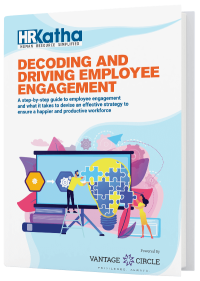Furloughed Employees- How To Bring Them Back?

The coronavirus pandemic has prompted unprecedented mass layoffs that have been confirmed by significant organizations that are downsizing their workforces. However, many business chiefs have so far opted to furlough employees instead of severing ties entirely. It is a thoughtful decision to secure the right talent in a tight labor market. That raises the first question, what is a furlough exactly?
What is an Employee Furlough, or who are the Furloughed Employees?
To put it plainly, an employee furlough is when employers ask their workers to take unpaid leaves of absence. In other words, the furloughed employees are not going to work and not going to get paid. But technically, they're still going to stay employed.
Adam Calli, founder and principal consultant at Arc Human Capital, explained, "The employer does this to drastically cut costs in times of economic difficulty, [whether for] the economy overall, or specific to a particular industry, company, or location." "For many organizations, labor costs (payroll tax and employee benefits) can be 70% of their operating cost! That's why this is where they look first to save money the fastest," he added.
Difference Between A Furlough And Laid-Off Employees
Every company should think hard before laying off because they may need the skills shortly when they get back to normal. And if one agrees to this statement, furlough is the right strategy- Unmesh Pawar, partner, head, people, performance & culture, KPMG.
There's one main difference between a layoff and a furlough. That is, while a furlough is meant to be temporary, a layoff is permanent. There's no assurance you're going to get your job back. The other significant differences include-
- Access to benefits
- Employer responsibilities
- Unemployment accessibility
fourty-seven percent of small businesses had to lay off some or all of their workers because of Covid-19.
How To Furlough Employees?
First, let's know the two raw furlough formats-
One-time and Rolling cycle furloughs are the most prevalent furlough methods. A one-time furlough is when employees are effectively laid off for some time. They have a scheduled restart date or prepare to reevaluate with changing market conditions.
On the other hand, each employee takes a one-week or more extended furlough in the Rolling cycle furloughs. It can be once in a fixed, rotating period. Maybe every three weeks.
However, some companies with seasonal work can have regular furloughs. For example- a seasonal manufacturer can furlough employees once the season is over. Again the inadequate supply of materials can result in furloughing.
Why And Who Furloughs Employees?
Generally, in both public- and private-sector organizations, employee furloughs may occur when revenue or expected revenue does not equal expenses. While facing a financial crisis, leaders can recognize which positions they should temporarily remove. Accordingly, they should decide when the necessary unpaid time off might begin.
Accordingly, companies inform workers that they would be furloughed. In some instances, the organization can tell the furloughed employees when they can return to work. In other situations, the furlough can be for an unspecified time frame.
Rights Of Furloughed Employees
First and foremost, furloughed employees are allowed to seek new jobs. One of the critical risks here for an employer is that their best talent would get work elsewhere.
The Office of Personnel Management has expressly stated for public employees, "rules regarding outside employment continue to apply when an individual is furloughed." For concerns regarding those regulations, the department suggests contacting the official ethics personnel.
Do Furlough Employees Get Paid?
Generally speaking, furloughed workers are entitled to the same employee benefits that they would enjoy under normal circumstances. And because employee furloughs are temporary initiatives, severance pay, outplacement, and early retirement benefits are not available to furloughed workers.
A public employee can also take out-of-pay unemployment benefits for their time. Since unemployment is compensated by states, not by the federal government, it will not suffer a budget lapse in the financial federal government shutdown.
Not every employee can choose this option. Every state has different regulations for the same. Employers are advised to follow relevant federal and state wage and hour laws when planning a furlough.
Again, employees are classified into two groups: exempt and nonexempt employees. Each group is paid differently for the work they do.
Exempt employees hold an executive, administrative, or professional role and are paid on a salary basis within a corporation. They are exempted from overtime pay as per the Fair Labor Standards Act (FLSA).
One must pay a fixed wage to an exempted employee for every week they work in most cases. It may be equal to or greater than the minimum amount set by law. However, they are not paid for full-week shutdowns.
At the same time, nonexempt employees are entitled to pay for the hours they have worked.
Advantages Of Having Furloughed Employees
For any company, the advantage with furlough is that they do not have to pay the employees, whose skills aren’t required for a specific period of time. It is ideal for times when cash flows are poor and companies want to save money by cutting various kinds of costs till demand picks up.- Raj Narayan, CHRO, Titan.
-
Decreases rehiring needs
Employers may be assured that they will have skilled staff ready to return as soon as their doors re-open. However, there is no assurance that all furloughed workers will return after the time off from work. -
Allows planning
Seasonal furloughs enable employers and employees to consider budgeting and planning accordingly. Thus, there are no traumatic consequences. -
It saves the cost of compensation
While every organization would like 12 months out of every year to be busy, that's not always the case. Thus, by decreasing jobs or fully closing down for some time, companies can be more profitable. -
Prevent unemployment
While employees do not collect paychecks during a furlough, they have the confidence to work in the future. It can provide some relaxation to the furloughed employees, especially when they know that the furlough will be short.
Disadvantages 0f Having Furloughed Employees
Employers save money, but not as much as they think they will, because so many of an employer’s costs for benefits continue during furloughs.- Susan Heathfield
-
It doesn't eliminate expenses
Benefits, depending on the duration of the furlough, should be paid to employees during a leave. Also, upper management generally gets paid for all their contributions during the furlough. Thus the sad truth is that furlough will slash costs, but companies won't remove them.
-
Slowers down work momentum
Sometimes furlough happens in the middle of an ongoing project. It slows down the work momentum, failing innovative ideas. When work gets restarted, employees tend to lose their track of work, and it hampers productivity. They may need time to get the same efficiency back. Again, sometimes some employees may not return to work at all. It will require new employees to be recruited and trained, leading to further expenses and time consumption.
-
Hampers employee morale
Employees can face increased tension and suspicions, thus decreasing job efficiency. Especially if a furlough is unexpected, employees may become worried about their future in the organization. They may also fall prey to misinformation and gossip.
-
Missing out the top employees
While on furlough, the top performers are the most likely to find new jobs. They might use the opportunity to update their resumes and begin job hunting. It is possible even if they know that their furlough is short-term.
Now, let's know how to re-onboard furloughed employees.
Coming back to Coronavirus and its effects across the globe, organizations are experiencing unthinkable uncharted waters. Employers have to deal with a host of challenges in getting furloughed employees back to work. Now is the time for organizations to pave the groundwork for unique return-to-work plans to be enforced.
A recent international survey reveals that furloughed employees are 37 percent more likely than those who have been laid off to experience mental health issues during the pandemic. The survey was conducted by more than 2,000 employees at the end of March and early April 2020 in Australia, France, Germany, New Zealand, Singapore, the UK, and the US,
Thus, employers should understand the value of empathy and sensitivity while they bring back their furloughed employees.
Here Are Seven Tips For Bringing Back Furloughed Employees-
1. Welcome them formally
Begin with an offer letter that lists all the information which your furloughed employees need to know. When it comes to their job, compensation, and benefits, they want to know what's changed (if anything).
Employee safety is at the center of getting people back to work, so it is essential to communicate this to your employees and raise awareness of workplace changes.
Have salaries been cut across the board, for instance? How does being on furlough impact their sick leave or annual leave? You can also include information on how you will ensure the workplace safety and the well-being of employees.
2. Provide a supportive environment
It would help if you realized that the pandemic might have a different impact on your diverse employees. There might lead to some negative feelings creeping into employee relations, resulting in conflicts.
As an employer, you should explore opportunities to reunify your employees into a team. You can organize various team-building activities, have one-on-one meetings, and even arrange a socially distanced BBQ.
3. Offer training and education
It's vital to get your employees back on the right track as soon as possible. Thus, make sure that they get the required training without missing out on the right tools and other resources.
As an employer, you must create a safe working atmosphere and encourage social distancing. Re-onboarding should involve attempts to educate employees on the various rules, which may differ from country to country.
4. Encourage transparent communication
Furloughed employees are full of stress, anxiety with an overly complicated feeling. As employers, it's essential to be mindful of these and do what you can. Transparent communication about the condition of the organization and recovery plans can clear a lot of uncertainty.
Simply sending an update weekly at a designated time, even if there is no new information, will help your employees plan better.
Open-door policy so that employees with any questions or complaints may privately reach out to you can be of great help. It will help them feel valued and supported.
5. Keep backup options open
Your furloughed employees may accept or refuse the offer to return and have their job terminated. Be respectful and supportive of their decision and have a backup plan for new hiring.
6. Know how your employees feel
While you can welcome your workers back, you need to consider people's comfort levels and desire to return to work. It's your responsibility to understand what can help your people perform (and feel) their best in the organization.
You may directly ask employees what they think about returning to work through employee surveys. It will build an atmosphere that will help you communicate, understand and support them better!
7. Recognize and appreciate
Returning to work after a furlough can be challenging for your employees. Your job is to maintain high spirits and boost engagement with employee rewards and recognition during the re-onboarding period.

Vantage Circle is a simple AI-powered Rewards & Recognition Platform for upgrading your employee experience and engagement for better productivity.






